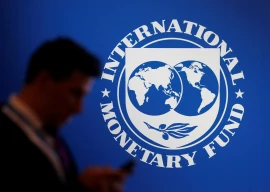
ISLAMABAD: The rise in temperature (global warming) due to anthropogenic activities is a reality. By the end of the century, the situation is likely to worsen drastically if greenhouse gas emissions are not reduced significantly.
Humans have often convinced themselves that technological advancement can reduce greenhouse gas emissions and help cope with scarcity of natural resources – The Cornucopian Theory. This is not the case as it is evident that societies have suddenly collapsed as technologies fail or their material resources run scarce; for example the collapse of Mayan civilisation.
Too much faith only in technological solutions to climate change may lead to a similar situation in future, if politically and socially rational changes are not made.
Fossil fuels – a major source of energy – are known for their key contribution to human development. According to the International Energy Agency, fossil fuels meet around 80% of the world’s energy demand and are responsible for about 40 gigatons of carbon dioxide emissions per annum.
This higher concentration of carbon dioxide in atmosphere is the main cause of global warming.
Furthermore, increasing human population is also contributing to the depletion of natural resources and environmental degradation. More population requires more resources to get processed and disposed of in the environment in the form of pollution.
Currently, the world is striving to address climate change by reducing carbon footprint through less consumption and better technology. But an unsustainable growth of human population will undermine these efforts.
So, in order to cope with climate change, we not only need smaller footprints, but also lower number of feet on earth - Neo-Malthusians Theory. This controlled growth of human population will lead to a healthier and more stable post-fossil fuel society as it helps to reduce the demand for natural resources, especially fossil fuels, coupled with technological advancement.
Researchers across the world have examined the effect of various population growth scenarios on economic development and energy use. They have found that slower population growth has the potential to significantly reduce greenhouse gas emissions in future.
Impact on Pakistan
Pakistan, similar to many other developing countries, has a high population growth rate. It has been observed that in the last two decades, its population has increased by around 57% and is expected to double in the next 30 years.
On the other hand, material resources of the country are either stagnant or growing very slowly whereas poor economic performance and internal security condition have made the situation worse.
Although Pakistan is currently emitting low levels of greenhouse gases, it is one of the most vulnerable countries in relation to climate extremes (floods, droughts and heat waves).
According to Oxfam, for the long run, farmers’ ability to produce food has been affected by continuous flooding in the past few years.
Water availability for the rapidly growing population is another major challenge as per capita water availability has decreased from 5,260 cubic metres in 1951 to 908 cubic metres in 2017.
Climate change may reduce water resources even further and this will affect lives and livelihoods of the growing population.
Energy and agriculture sectors account for 90% of Pakistan’s total greenhouse gas emissions. According to the INDC (Intended Nationally Determined Contribution) in 2015, both sectors account for around 334 metric tons of carbon dioxide equivalent (mt Co2 equivalent) emissions.
In the coming decade, greenhouse gas emissions will increase more rapidly to around 1,355 (by energy and agriculture sectors) mt Co2 equivalent in 2030, just to fulfil demand of the growing population.
Increased concentration of greenhouse gases in the atmosphere will have a severe impact on future generations because the presence of carbon dioxide in atmosphere is long-lasting - even for thousands of years – and takes about a decade to have its maximum warming effect.
It means that the amount of carbon dioxide we are emitting will increase the dangers of climate change in the next decade and later.
Currently, Pakistan requires $7 to $14 billion per annum to tackle existing climate vulnerabilities. Furthermore, it requires around $40 billion to reduce its projected greenhouse gas emissions by 20%.
By keeping in view the population growth, demand for food and energy, economic performance and climate change impact, it would be difficult for Pakistan to achieve its development targets until or unless it controls its population growth.
For this purpose, it is important to integrate economic policy with population and resource distribution policies. This would be helpful in enhancing people’s prosperity as there will be less mouth to feed with more economic development through efficient use of scarce resources.
The writer is currently working as research assistant at the Sustainable Development Policy Institute
Published in The Express Tribune, April 30th, 2018.
Like Business on Facebook, follow @TribuneBiz on Twitter to stay informed and join in the conversation.














































COMMENTS
Comments are moderated and generally will be posted if they are on-topic and not abusive.
For more information, please see our Comments FAQ